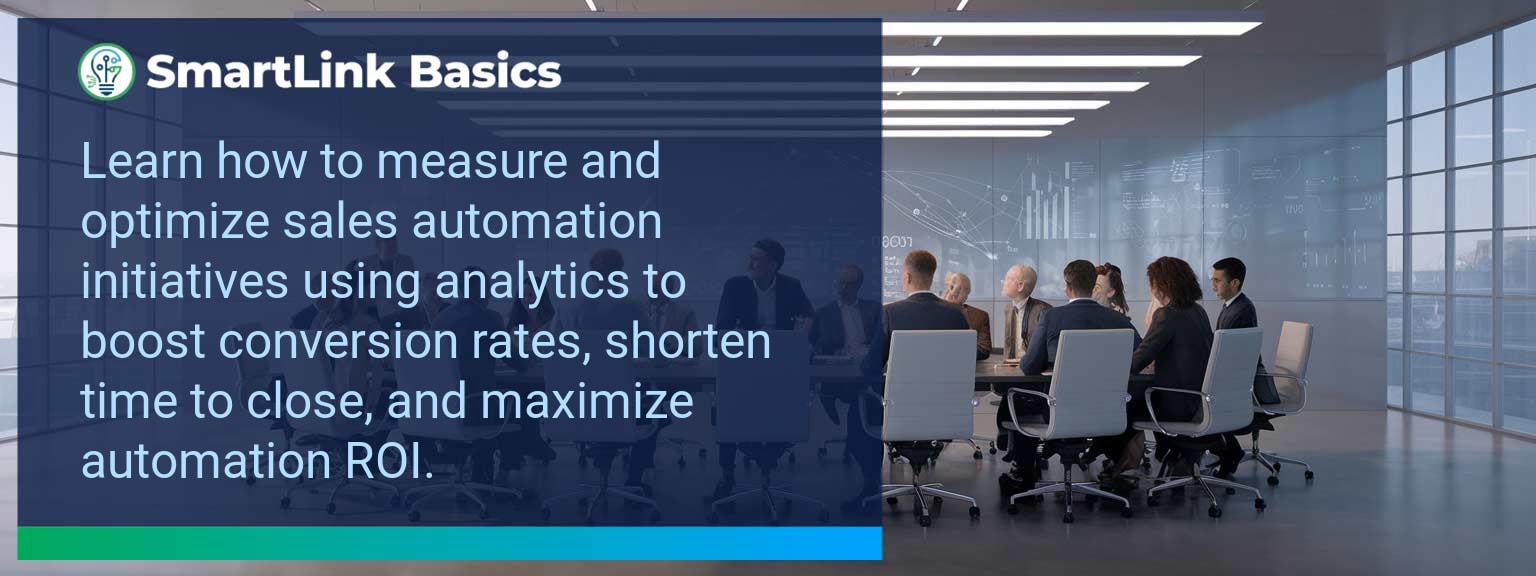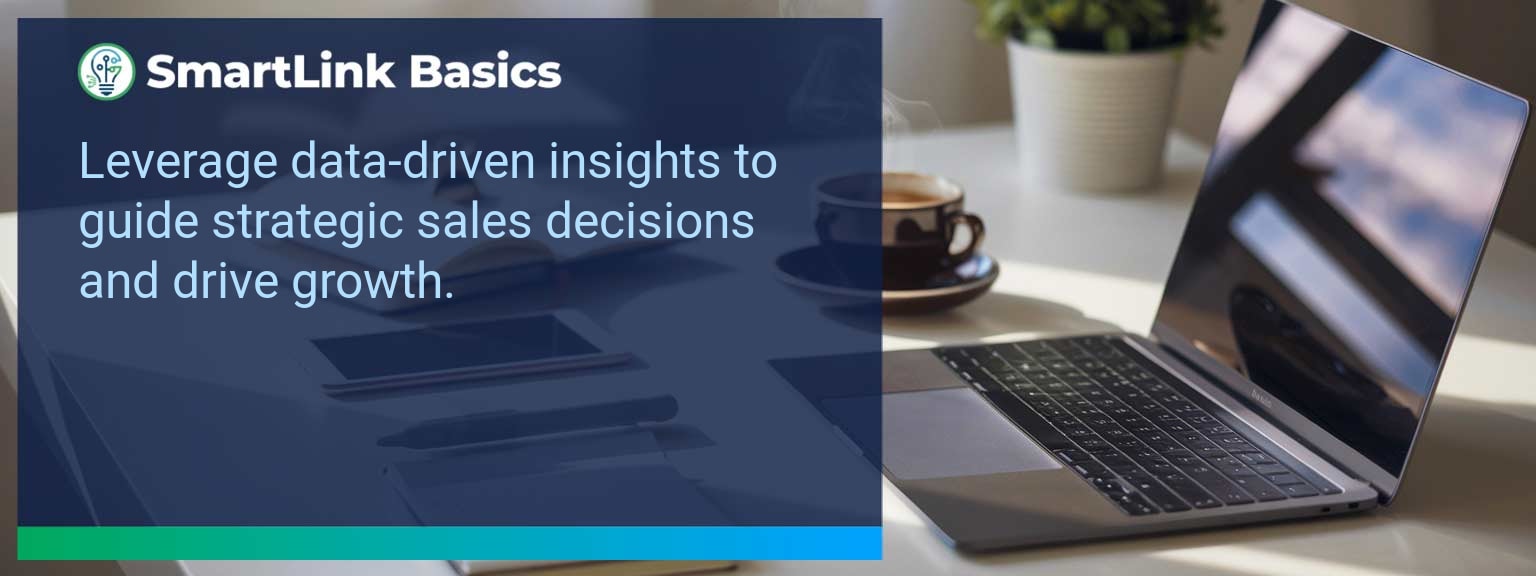Industry data shows that organizations adopting AI-driven automation achieve cost reductions of up to 30% while accelerating sales cycles by 20% or more (McKinsey, 2024). For sales leaders, AI automated workflows now define competitive advantage, enabling teams to reallocate time from repetitive tasks to high-value engagements. At SmartLink Basics, we help decision-makers implement these systems strategically, ensuring they integrate with existing revenue operations. In this article, you’ll see how AI automated workflows power business outcomes, the common obstacles that slow adoption, and practical steps to optimize processes. You’ll walk away with proven examples, a 90-day action blueprint, and measurable KPIs to track results.
- Automate repetitive administrative and CRM updates with AI.
- Integrate machine learning to personalize outreach at scale.
- Streamline approvals, quotes, and contract workflows for speed.
- Use predictive analytics to prioritize sales opportunities.
- Track adoption and performance with targeted metrics.
AI Automated Workflows: What Changed and Why It Matters
AI adoption has shifted from experimental to operational, making automated workflows a standard in high-performing sales organizations. The real advantage lies in combining workflow automation with artificial intelligence workflows to optimize every step of the revenue process. Sales leaders now use AI to synchronize touchpoints, reduce manual inputs, and ensure faster execution. For example, a B2B SaaS leader introduced automated lead enrichment and routing, cutting qualification time by 60%. Actionable insight: Audit processes for time-intensive handoffs and apply AI where repeatability is high.Redesign the Revenue Operating System With AI Automated Workflows
ICP, Segmentation, and Targeting AI-enabled segmentation uses historical wins, firmographic, and behavioral data to dynamically update ICP profiles. This ensures targeting precision without quarterly re-work. Pipeline Architecture Automated workflows push opportunities through the right stages based on engagement signals. AI flags at-risk deals for intervention. Plays and Messaging Integrated automation tools deliver personalized sequences based on buyer activity, increasing relevance at every touchpoint. Operating Cadence AI schedules follow-ups, forecast calls, and account reviews based on actual pipeline movement rather than static calendars. Actionable insight: Implement automation that adapts in real-time to both internal and buyer-driven events.Common Obstacles To Achieving Seamless Automation
The most frequent challenges are fragmented systems, inconsistent data quality, and cultural resistance. Without a unified data layer, automation amplifies errors rather than solving them. Coca-Cola Europacific Partners reported needing a full data governance upgrade before AI could improve sales workflows. Leaders must first assess infrastructure readiness and train teams to trust AI-influenced recommendations. Actionable insight: Before deployment, establish clean data practices and a single source of truth.Implementing AI To Optimize Workflows
Effective deployment of AI process optimization starts with mapping current-state processes, identifying friction points, and matching them with automation tools. For example, automating proposal generation based on CRM opportunity data can reduce turnaround from three days to one hour. Solutions combining business process automation platforms with machine learning integration enable continuous performance improvement. Actionable insight: Pilot in one high-impact stage, measure, and then expand.Tangible Benefits From Automated Processes
The benefits extend beyond time savings — sales leaders gain a scalable system. Tangible outcomes include faster quote-to-close, higher lead conversion, and better forecast accuracy. A manufacturing firm implemented AI-assisted order processing and cut errors by 40%, improving on-time delivery rates. Actionable insight: Track both speed and accuracy to measure workflow automation effectiveness.Metrics That Matter
| Category | Metric | Definition | Target |
|---|---|---|---|
| Leading | Workflow Completion Rate | % of automated sequences executed without manual intervention | 95%+ |
| Leading | AI Suggestion Adoption Rate | % of AI-generated action recommendations executed by reps | 80%+ |
| Lagging | Cycle Time Reduction | Decrease in time from lead entry to closed-won | 20%+ |
| Lagging | Revenue Per Rep | Average sales revenue generated per sales rep per quarter | +15% YoY |
| Quality | Automation Error Rate | % of workflows that trigger incorrect outcomes | <1% |
| Quality | Customer Satisfaction Post-Automation | Average CSAT score after automation implementation | ≥ 4.5/5 |
Innovations And Next Steps For AI Automation
Emerging capabilities like AI-generated playbooks, intent-driven dynamic routing, and integrated AR for virtual product demos are shaping the next wave of sales automation. Companies integrating these tools early will outpace competitors in speed and personalization. Actionable insight: Stay ahead by testing emerging automation features quarterly and aligning them with evolving buyer expectations.Get the 90-day plan, coaching rubric, and dashboard template to operationalize AI in your enablement program.
Turning AI Automation Into a Revenue Multiplier
AI automated workflows are now a strategic lever for predictable, scalable growth. This guide outlined current applications, adoption challenges, a 90-day execution plan, and measurable success criteria. To make automation pay off, sales leaders should integrate tools into one cohesive operating system and review results monthly for continuous improvement. Access more AI-driven sales enablement resources from SmartLink Basics to design a high-performance automation strategy. Strong sales leadership is the difference between a team meeting targets and one that redefines them. Research from the Sales Management Association shows that organizations with structured leadership development outperform peers by up to 20% in revenue growth per representative. At SmartLink Basics, we see that the most effective leaders set a clear vision, hold teams accountable, and foster a culture built on consistent performance habits. This article outlines actionable sales leadership strategies you can apply immediately to strengthen sales team management, accelerate sales performance improvement, and build a culture where leadership in sales drives measurable gains.- Define and communicate a compelling sales vision.
- Address and remove obstacles that limit team performance.
- Implement structured coaching and accountability rhythms.
- Measure progress with leading, lagging, and quality indicators.
- Reinforce momentum with ongoing leadership engagement.
Common Obstacles To Sales Team Effectiveness
Even high-caliber sales teams encounter common barriers: unclear targets, inconsistent processes, and low cross-department alignment. These challenges erode focus and slow sales performance improvement. For example, when pipeline stages are poorly defined, forecasting accuracy drops and closing rates suffer. Leaders can address these obstacles by auditing existing workflows, clarifying metrics, and ensuring that every sales activity connects directly to the company’s revenue priorities. This requires not only procedural discipline but also sales motivation practices that keep teams engaged beyond the numbers.How To Implement Sales Leadership Strategies Effectively
Effective sales leadership is a blend of clear direction, robust systems, and continuous feedback. Start by defining your Ideal Customer Profile (ICP) and segmentation strategy to ensure your sales team is targeting the right opportunities. Create a pipeline architecture that outlines each sales stage, with plays and messaging tailored to each stage of the buyer journey. Adopt an operating cadence—such as weekly forecast reviews and monthly strategy sessions—that keeps goals visible and performance conversations regular. Integrate sales coaching into these touchpoints to avoid reactive management and instead build proactive improvement habits.Positive Impacts On Sales Growth And Team Morale
When leadership in sales is deliberate and consistent, the effects are measurable. Clear goals backed by disciplined coaching improve quota attainment rates, while transparent recognition programs boost morale. For instance, a technology firm using vision-driven sales coaching saw a 15% quarterly revenue increase after aligning their pipeline standards and coaching practices. A strong sales culture reduces turnover and fosters resilience during market shifts, ensuring the team sustains high performance even under pressure. Leaders committed to these principles create an environment where sales success becomes the norm.Metrics That Matter
| Category | Metric | Definition | Target |
|---|---|---|---|
| Leading | Pipeline Coverage | Ratio of pipeline value to quota | 3:1 |
| Lagging | Win Rate | Closed deals vs. opportunities created | 30%+ |
| Quality | Sales Process Compliance | Adherence to defined pipeline stages | 95% |
Get the 90-day plan, coaching rubric, and dashboard template to operationalize AI in your enablement program.









